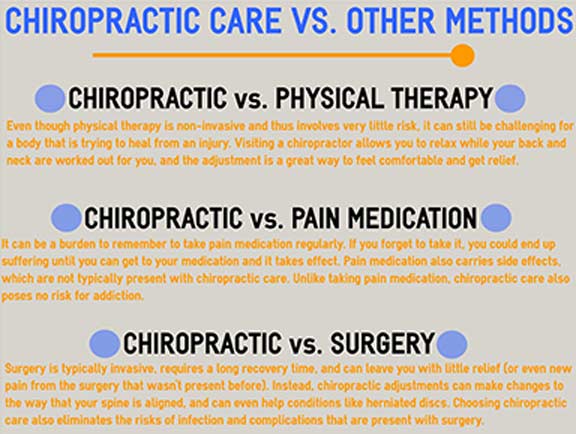The Partnership In Between Stance And Pain In The Back: Techniques For Preserving Appropriate Placement Throughout The Day
The Partnership In Between Stance And Pain In The Back: Techniques For Preserving Appropriate Placement Throughout The Day
Blog Article
Web Content Written By-McKinley Mcgowan
Keeping appropriate posture isn't nearly sitting up right; it's about aligning your body in a way that sustains your spine and lowers the danger of pain in the back. The means you sit, stand, and move throughout the day can significantly influence your back health and wellness. However exactly how precisely can you ensure great positioning continually, also throughout hectic days filled with numerous tasks? Let' https://jaidennhcwq.blogsidea.com/38427372/interested-by-the-numerous-types-of-neck-and-back-pain-and-their-reasons-decipher-the-mystery-of-your-neck-and-back-pain-for-enduring-alleviation into the subtle yet impactful adjustments you can make to your everyday routine to keep your back satisfied and healthy and balanced.
Significance of Proper Pose
Proper stance is important in keeping a healthy back and preventing discomfort. When you sit or stand with good pose, your spinal column remains in positioning, reducing stress on your muscular tissues, tendons, and joints. This positioning enables the body to distribute weight uniformly, avoiding too much tension on certain areas that can cause discomfort and pain. By maintaining your back correctly straightened, you can also boost your breathing and digestion, as slouching can compress body organs and limit their capability.
Additionally, keeping functional medicine austin texas can boost your general appearance and positive self-image. When you stand tall with your shoulders back and head held high, you exude confidence and appear even more friendly. Great posture can likewise make you feel more energized and alert, as it advertises correct blood circulation and enables your muscle mass to function efficiently.
Integrating appropriate pose right into your everyday routine, whether sitting at a workdesk, walking, or exercising, is vital for stopping pain in the back and advertising overall health. Keep in mind, a tiny modification in just how you hold yourself can make a considerable difference in how you really feel and function throughout the day.
Common Postural Mistakes
When it concerns preserving great posture, lots of people unwittingly make typical mistakes that can add to pain in the back and pain. Among the most widespread errors is slumping over or stooping over while resting or standing. This position places too much stress on the spine and can cause muscle mass imbalances and pain in the long run.
how to treat back pain is overarching the reduced back, which can flatten the natural curve of the spinal column and trigger pain. Additionally, crossing legs while sitting may really feel comfortable, yet it can produce a discrepancy in the hips and hips, leading to postural issues.
Using a pillow that's too soft or too solid while sleeping can also influence your positioning and contribute to pain in the back. Last but not least, continuously craning your neck to consider screens or readjusting your placement frequently can stress the neck and shoulders. Bearing in mind these usual postural errors can aid you preserve better placement and decrease the threat of pain in the back.
Tips for Correcting Positioning
To improve your alignment and reduce back pain, it's vital to focus on making small changes throughout your everyday regimen. Beginning by bearing in mind your stance. When sitting, ensure your feet are level on the flooring, your back is straight, and your shoulders are relaxed. Avoid slouching or leaning to one side. Use ergonomic chairs or pillows to support your reduced back.
When standing, distribute your weight evenly on both feet, keep your knees a little curved, and tuck in your pelvis. Involve your core muscular tissues to support your spinal column. Take breaks to extend and walk if you have an inactive task. Incorporate workouts that strengthen your core and back muscles, such as slabs or bridges.
While sleeping, use a cushion that sustains the natural curve of your neck to preserve appropriate spinal placement. Prevent sleeping on your stomach, as it can strain your neck and back. By bearing in mind these tips and making small adjustments, you can progressively remedy your placement and reduce pain in the back.
Final thought
Keep in mind, maintaining great pose is crucial to preventing neck and back pain and advertising spinal wellness. By bearing in mind your positioning, distributing weight equally, and engaging your core muscles, you can minimize strain on your back and lessen the danger of pain and injury. Include ergonomic support, take routine breaks to stretch, and strengthen your core and back muscular tissues to keep correct alignment throughout the day. Your back will thank you for it!
